A desk is an essential piece of furniture that plays a crucial role in providing a functional and comfortable workspace. When it comes to desk measurements, there are several factors to consider, including height, width, and depth. Each of these dimensions contributes to the overall ergonomics and usability of the desk.
Table of Contents
In this article, we will delve into the optimal measurements for a desk and explore how they vary based on different purposes and requirements.

Desk height: finding the right level of comfort
One of the first considerations when choosing a desk is the height. The desk height should be carefully selected to ensure proper ergonomics and comfort while working. The ideal height varies depending on the intended use of the desk.
For a sitting desk, the average desk height ranges from 28 to 30 inches.
This height provides a comfortable position for most individuals, allowing their arms to rest at a 90-degree angle when typing or writing.
However, it’s crucial to note that people come in different heights, so adjustable desks are an excellent option to accommodate individual preferences and promote better posture.
On the other hand, standing desks have gained popularity due to their health benefits. A standing desk typically ranges from 40 to 48 inches in height, allowing users to work while standing.
This option promotes better blood circulation, reduces the risk of sedentary-related health issues, and offers flexibility for individuals who prefer to alternate between sitting and standing throughout the day.
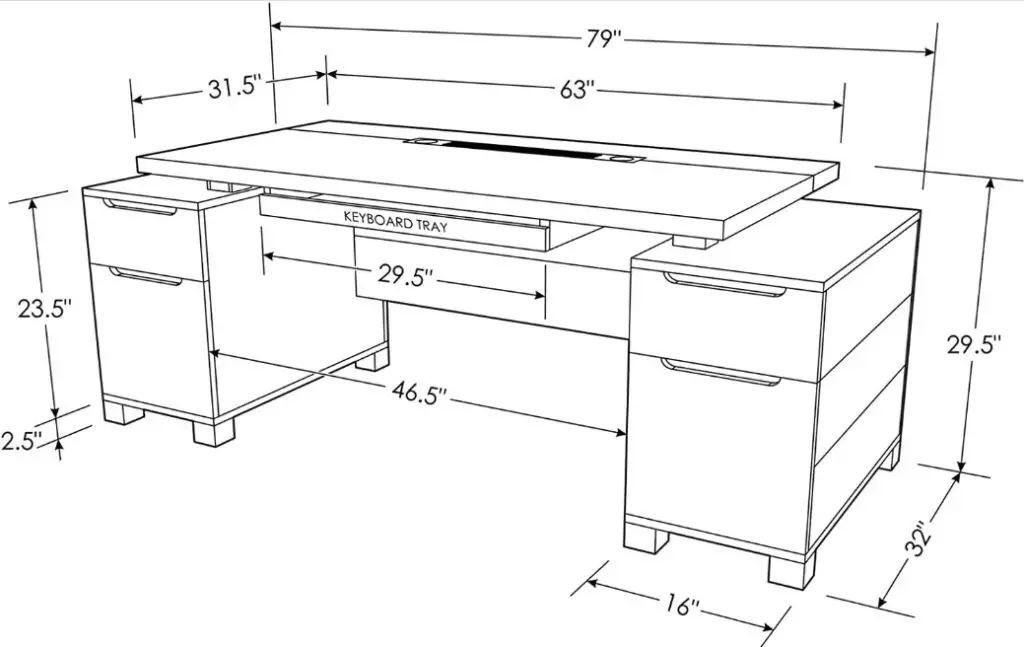
Desk width: tailoring the space to your needs
The desk width is another important consideration, as it determines the available desk space and influences its functionality for different purposes.
The ideal width of a desk can vary significantly based on the specific requirements of the user.
How wide should a desk be? For an office desk, the width generally falls between 70 to 90 inches. This size provides ample space for a computer monitor, documents, and other office essentials.
It allows for multiple monitors if needed, accommodating the increasing demand for multitasking in modern work environments.
Computer desks, specifically designed for computer setups, typically range from 20 to 30 inches in width.
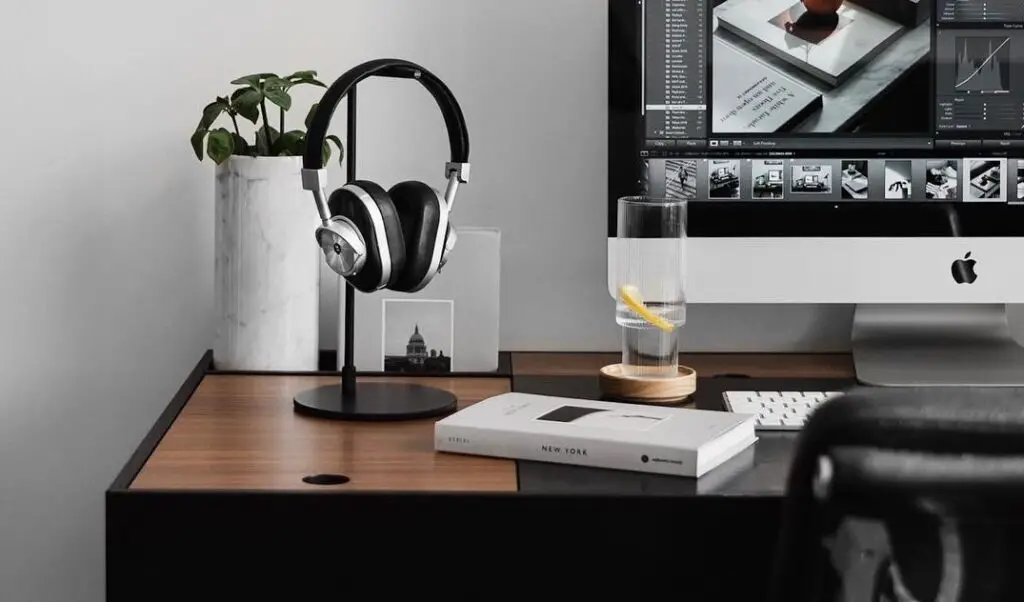
These desks prioritize sufficient space for a computer tower, keyboard, and mouse while maintaining a compact footprint.
When it comes to executive desks, which are commonly found in high-level corporate settings, the width can extend from 72 to 84 inches.
This larger size caters to the need for additional surface area and storage space, enabling executives to manage their tasks efficiently.
For a two-person desk, which is ideal for collaborative work or shared home offices, the width typically ranges from 60 to 72 inches.
This size ensures that both individuals have adequate space to work comfortably, with enough room for computers, desk chairs, and other accessories.

Desk depth: striking the right balance
Desk depth is another crucial dimension to consider. It determines the available workspace and plays a role in optimizing ergonomics and functionality.
The appropriate depth may vary depending on the specific requirements of the user.
Standard desk depth typically ranges from 24 to 30 inches.
This desk size allows ample space for a computer monitor, keyboard, and other essentials while providing enough space for writing or paperwork. It strikes a balance between functionality and conserving office space.
However, certain desk types may require greater depth. For example, gaming desks are designed to accommodate gaming setups, including multiple monitors, gaming consoles, and accessories.
As a result, gaming desk depth often ranges from 30 to 40 inches to ensure enough space for all the equipment.

Determining the desk size: factors to consider
To decide on the ideal size for your desk, it’s essential to consider various factors that will influence your specific needs.
Some key factors to keep in mind include the available office space, the number of monitors or devices you intend to use, storage requirements, and any specific tasks or activities you’ll be performing regularly, where you may need a large or small desk.
By assessing these factors, you can determine the appropriate desk size that provides enough place for your work essentials and promotes productivity and comfort in your workspace.
When determining the size of a desk, there are several factors to consider to ensure it meets your needs and provides a comfortable and functional workspace. Here are some factors to consider:
How much space is available
The dimensions of the room or area where you plan to place the desk play a crucial role in determining the appropriate size.
Measure the available space to ensure that the desk fits comfortably without crowding the room or obstructing walkways.
Consider the overall layout of the room and how the desk will integrate with other furniture or equipment. For example, if there is not enough space in your room you might need a small desk.
Workflow and tasks
Think about the type of work or activities you’ll be performing at the desk. For example, you might primarily work on a computer, engage in writing tasks, or require a surface for crafting and art projects.
Understanding your workflow and the specific tasks you’ll be undertaking will help determine the required surface area and storage needs.

Equipment and accessories
Consider the equipment and accessories you’ll be using in conjunction with the desk. This includes items like computer monitors, keyboards, printers, scanners, and desk lamps.
Ensure that the desk has enough space to accommodate your equipment comfortably and that there are suitable cable management options available.
Storage requirements
Determine the amount of storage space you need. Assess whether you require drawers, shelves, or other organizational features to keep your documents, supplies, and personal belongings within reach.
Take into account the size of filing cabinets, a pull-out tray, or storage units you plan to place alongside or beneath the desk.
Ergonomics and comfort
Consider ergonomic principles to promote proper posture and reduce the risk of discomfort or strain. The desk height should allow your arms to rest comfortably at a 90-degree angle when typing or writing.
The depth and width of the desk should provide ample space for your arms, keyboard, mouse, and other work essentials.
Ergonomic accessories like an adjustable desk chair and monitor stand can also contribute to a comfortable and healthy workspace.

Personal preferences
Your personal preferences and work style should also influence the size of the desk.
Some individuals prefer a clutter-free workspace with minimal distractions, while others may require a larger surface area to spread out materials or prefer a more visually stimulating environment.
By considering these factors, you can determine the appropriate size of the desk that not only fits your available space but also provides an efficient and comfortable workspace tailored to your specific needs and preferences.
Remember, finding the right size desk is crucial for productivity, organization, and overall well-being while working or engaging in activities at your desk.
Typical desk sizes
In this part of the article, we are going to discuss the average desk dimensions of different types of desks.
Typical student desk dimensions
Student desks are designed to provide a dedicated workspace for students to study and complete their assignments.
The typical width of a student desk ranges from 40 to 48 inches, offering enough surface area for textbooks, notebooks, and a laptop or computer.
Student desk depth is usually around 20 to 24 inches deep, providing ample space for writing and organizing study materials.
This desk size allows students to have a functional workspace while fitting comfortably in smaller rooms or dormitories.

Typical office desk size
Office desks are versatile and cater to various needs in professional settings.
The typical width of an office desk ranges from 70 to 90 inches, providing ample space for multiple monitors, documents, and other work essentials.
The typical office desk depth is generally between 24 to 30 inches deep, allowing room for a computer setup, a desk chair, and other accessories.
The larger size of office desks accommodates individuals who require a substantial working area and storage space within their office environment.
Typical computer desk dimensions
A computer desk is specifically designed to accommodate computer setups and peripherals.
The typical width of a computer desk falls within the range of 60 to 72 inches, providing sufficient space for a computer tower, monitor, keyboard, and mouse.
Computer desk depth is usually between 24 to 30 inches deep, allowing for comfortable placement of computer accessories and easy reach of frequently used items.
Additionally, computer desk often has a height of 28 to 30 inches, allowing for comfortable seating and ergonomic positioning.
This computer desk size strikes a balance between providing ample workspace and maintaining a compact footprint suitable for home offices or smaller work areas.
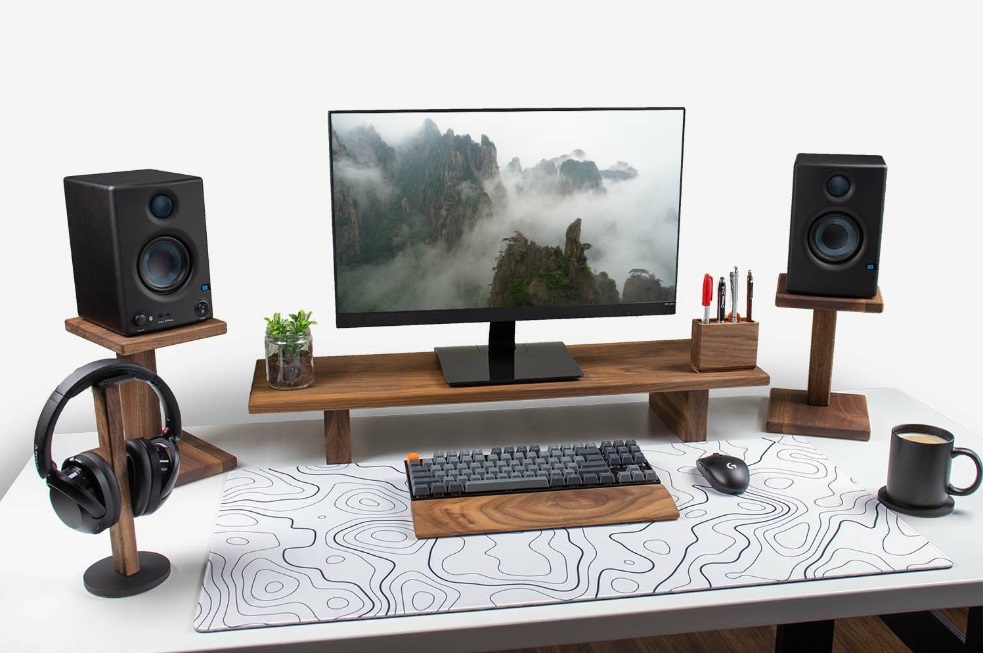
Typical two-person desk size
A two-person desk, also known as a double workstation desk, is designed to facilitate collaboration or accommodate shared workspaces.
The typical width of a two-person desk ranges from 60 to 72 inches, offering ample space for two individuals to work comfortably side by side.
The two-person desk depth is generally between 24 to 30 inches, providing enough space for two sets of computers, keyboards, and other necessary items.
This size ensures that each person has sufficient personal workspace while fostering collaboration and efficient communication between users.
Typical executive desk dimensions
Executive desks are often associated with high-level corporate settings and provide an expansive workspace for executives and professionals.
The typical width of an executive desk ranges from 72 to 84 inches, offering ample room for executives to manage multiple tasks simultaneously.
The depth of an executive desk is generally between 30 to 36 inches, providing generous surface area for paperwork, a computer setup, and other office essentials.
Additionally, executive desks often incorporate storage compartments and drawers to keep important documents and supplies within reach.

Typical writing desk size
Writing desks are designed to provide a focused space for writing, journaling, or engaging in creative activities.
The typical width of a writing desk falls within the range of 36 to 48 inches, offering enough surface area for writing materials, a laptop, or a tablet.
The depth of a writing desk is usually around 20 to 24 inches, providing a compact and minimalist design suitable for smaller spaces or home offices.
Writing desks often prioritize simplicity and elegance while providing a functional workspace for creative endeavors.
Standing desk
Standing desks have gained popularity due to their health benefits and ability to promote movement while working. The dimensions of standing desks are generally similar to those of regular sitting desks.
The typical height of a standing desk ranges from 40 to 48 inches, allowing users to work comfortably while standing.
The width of a standing desk is typically between 60 to 72 inches, providing ample space for a computer setup and work essentials.
The depth of a standing desk is usually around 24 to 30 inches, allowing sufficient room for a keyboard, monitor, and other accessories.
Standing desks often offer height-adjustable features to accommodate both sitting and standing positions, promoting ergonomic flexibility.
Gaming desk
Gaming desks are designed to cater specifically to the needs of avid gamers.
The typical width of a gaming desk ranges from 60 to 72 inches, providing ample space for gaming monitors, gaming consoles, and other gaming accessories.
The depth of a gaming desk is often slightly larger compared to other desk types, falling within the range of 30 to 40 inches.
This increased depth allows for multi-monitor setups, providing enough room for gamers to immerse themselves in their gaming environment comfortably.
Gaming desks may also feature cable management systems and additional storage compartments to keep gaming gear organized and easily accessible.
These typical sizes provide a general guideline for each desk type, but it’s important to remember that variations in design, brand, and personal preferences can result in slight differences in measurements.

Home office desk
When setting up a home office, considering typical desk sizes is essential to create an optimal workspace. Home office desk sizes can vary depending on the available space and individual needs.
On average, home office desk sizes range from 48 to 72 inches in width and 24 to 30 inches in depth, providing ample surface area for work essentials.
The height of a home office desk typically falls within the range of 28 to 30 inches, accommodating various desk chair heights and promoting proper ergonomics.
However, it’s important to note that the size of the desk for the home office may vary, and it’s crucial to select a desk size that suits your specific needs, considering factors such as the type of work you do and the available space in your home office.
Finding the right desk size will ensure that your home office provides a comfortable and functional environment for productive work.
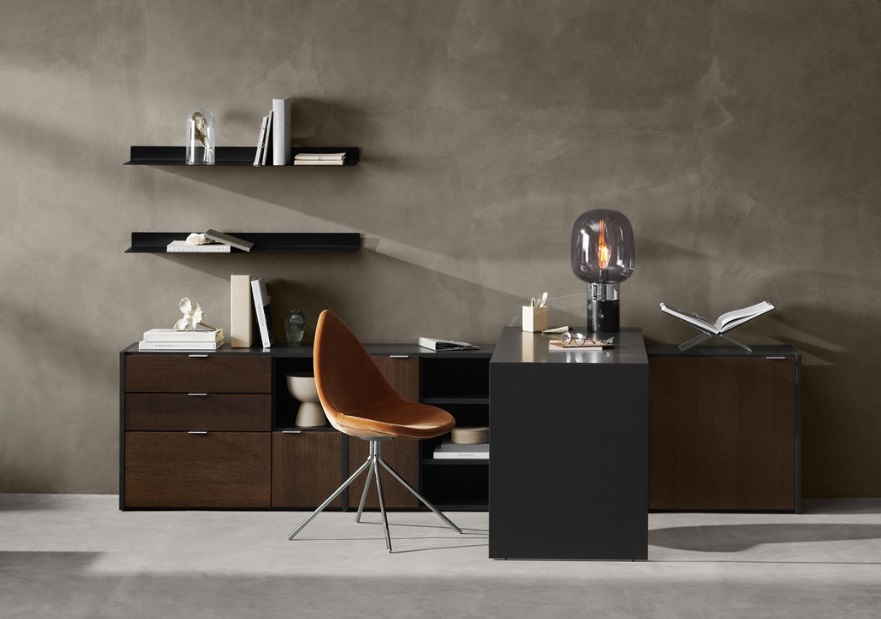
Typical corner desk size
Corner desks are a popular choice for optimizing space in a home office or small work area. The typical corner desk size can vary, but they are specifically designed to fit snugly in the corner of a room.
The dimensions of these desks often range from 40 to 60 inches in width and 28 to 36 inches in depth, offering ample surface area for work essentials while maximizing the available space.
The corner desk depth can vary, with options ranging from 10 to 37 inches deep.
These small desk sizes make corner desks an ideal solution for smaller spaces, allowing you to make the most of your home office without sacrificing functionality.
Whether you need extra space for your computer monitor or require storage options, a corner desk offers versatility and convenience while efficiently utilizing the corner area of your workspace.
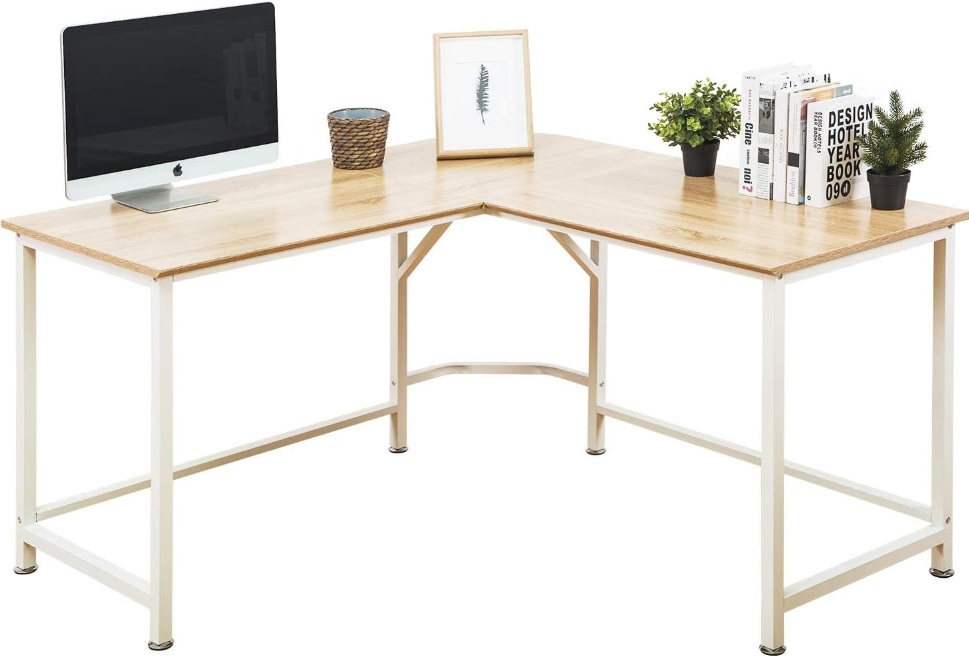
Conclusion
In conclusion, determining the ideal size for your desk involves careful consideration of various factors such as desk height, width, and depth.
By assessing your specific requirements, available space, and intended use, you can choose a desk that provides optimal comfort, functionality, and productivity in your home office or workspace.
Remember, adjustable desks offer flexibility for different user preferences, and considering ergonomic guidelines is crucial to promoting good posture and reducing the risk of musculoskeletal issues.
So, how wide should a desk be? Whether you opt for a standard desk or a specialized one, finding the right size will enhance your overall work experience and contribute to your well-being in the long run.
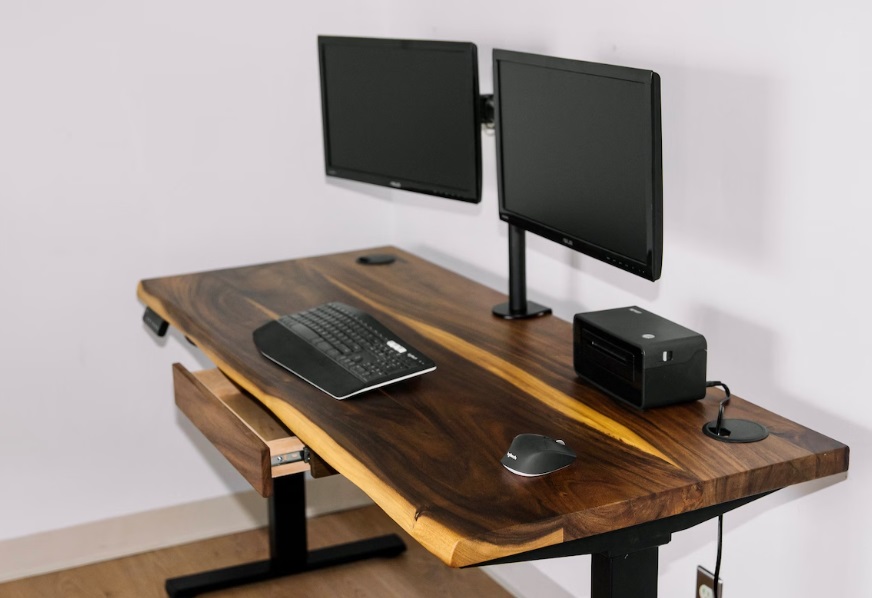
Frequently Asked Questions (FAQs):
What is a good width for desk?
A good width for an office desk can vary depending on individual needs and available space. However, the typical desk width for most computer desks ranges from 47 to 59 inches, providing ample surface area for work and equipment placement.
What is the average width of a desk?
The average width of a desk, including both home office and computer desks, falls within the range of 47 to 59 inches. These dimensions accommodate the needs of most individuals and allow for the comfortable use of various office equipment.
How deep should a desk be?
When considering the depth of a desk, it is important to ensure sufficient space for work activities and the placement of essential items. A desk depth ranging from 19 to 24 inches is commonly recommended for standard desk dimensions. This depth provides ample room for a computer monitor, keyboard, and other office supplies.
Is a 48-inch desk big enough?
A 48-inch desk can be considered reasonably spacious for most purposes, including a home office or computer use. This size desk allows for the comfortable placement of a computer or laptop, along with accessories such as a monitor, keyboard, and mouse.
However, if you plan to use multiple monitors or require additional workspace, you may prefer a wider desk for better functionality and organization.
Read also: Gaming Desk vs Regular Desk (What are the 09 Significant Differences)